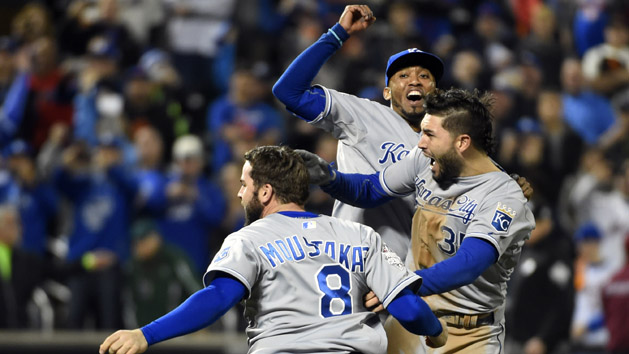
BOCA RATON, Fla. — The Kansas City Royals have been to the World Series two years in a row, winning it this year, after going from 1986 to 2014 between appearances.
The Pittsburgh Pirates have been to the playoffs three straight years since ending a string of 20 consecutive losing seasons that spanned from 1993-2012 and set the major North American team professional sports record for sustained futility.
The New York Yankees haven’t won a postseason game since 2012. The Boston Red Sox have finished last in the American League East in three of the last four seasons, though they did win the World Series in 2013.
Major League Baseball has been flipped on its head in recent years. There are no longer the haves such as the big-market Yankees and Red Sox and have nots like the small-market Royals and Pirates.
Large television contracts and the ultra-successful Major League Baseball Advanced Media have pumped so much money into the sport that all 30 teams are profitable. Throw in increased revenue sharing over the years and the gap between the once-rich and once-poor teams narrowed even further.
Commissioner Rob Manfred said this week during the MLB general manager meetings that one of his favorite parts of his first season on the job after succeeding the retired Bud Selig is that the Royals and New York Mets played in the World Series.
“My favorite fun fact about the World Series is we had a small market against a big market, and the small market had a higher payroll than the big market. That’s all good from my perspective,” Manfred said. “The correlation between payroll and winning going down I think is a great analytical indicator of competitive balance in the game.”
Indeed, the Royals’ payroll at the end of the season — as determined by MLB for luxury-tax purposes — was $128 million, which ranked 13th among the 30 teams. The Mets, despite playing in the nation’s largest market, were 19th at $110 million.
Parity was one Pete Roselle’s favorite words when he turned the NFL into the behemoth it is today while under his commissionership. MLB certainly has parity now as the number of newcomers to this year’s postseason attests.
The Toronto Blue Jays ended the longest active postseason drought the majors as they qualified for the first time since 1993. The Houston Astros made the playoffs for the first time since 2005, the Mets for the first time since 2006 and the Cubs for the first time since 2008.
“I think it’s great for baseball that so many new teams are having success,” Astros GM Jeff Luhnow said. “Houston is a great sports town and I saw how excited our fans were to see us be in a pennant race and play in the postseason. It reenergizes the fans. It was great to see and a lot of fun to be part of. Every team — and especially their fans — should have a chance to experience what we did.
“The last thing you want is for a franchise to lose for so long that they risk having a generation of fans become disengaged. It’s important that everyone has an opportunity to be competitive.”
Most executives credit the leveling of the playing field to changes Selig and Manfred, who was then MLB’s chief labor negotiator, were able to make to the collective bargaining agreement through negotiations with the Major League Baseball Players Association.
Changes to the luxury tax system following the 2011 season implemented bigger penalties to teams that went over the threshold. At the same time, restraints were added to cut down on spending in the amateur draft.
Beginning next year, a new provision to the CBA will prevent larger-market teams from receiving revenue-sharing money. The list includes the teams in New York, Los Angeles and Chicago as well as the Astros, Blue Jays, Red Sox, Atlanta Braves, Philadelphia Phillies, San Francisco Giants, Texas Rangers and Washington Nationals.
Selig often liked to say how important it was to provide “hope and faith” to every team’s fan base. That time has arrived.
“The whole purpose of Bud Selig’s effort was to level the playing field, and it’s been accomplished,” Yankees GM Brian Cashman said. “There is parity. The next great ‘whatever’ that becomes available, even though it constantly gets written that the Yankees are on him or will be on him, that narrative is not accurate. Not because of our ownership change, because (late owner) George Steinbrenner is no longer with us, it’s because the rules and the guidelines of the game have changed.”
—
Senior writer John Perrotto is The Sports Xchange’s baseball insider. He has covered Major League Baseball since 1988.
